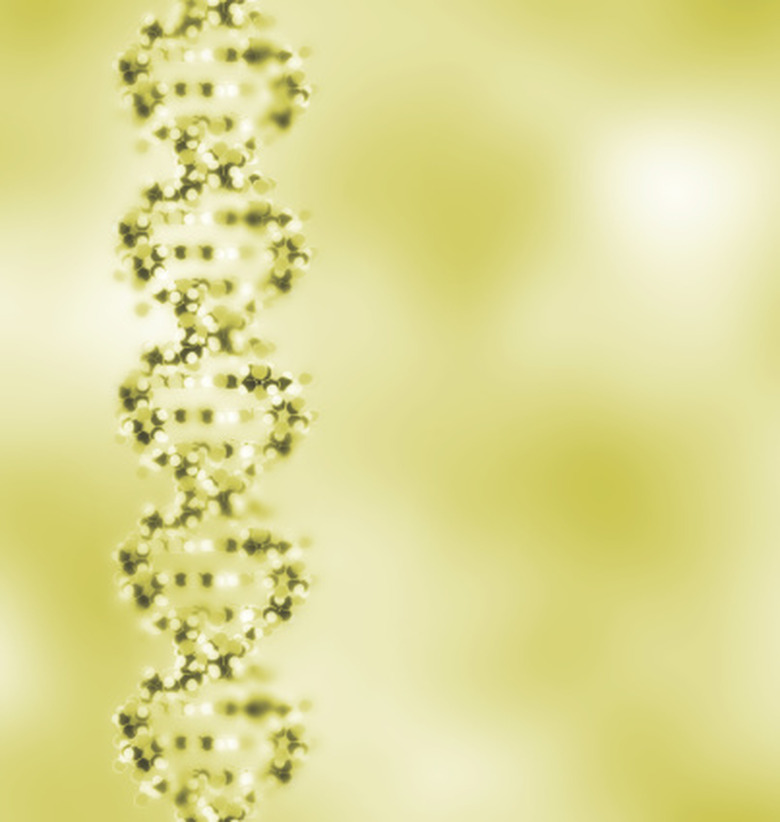What Are The Different Types Of Kingdoms?
Scientist have developed a system for the classification of living things (taxonomy) that groups like organisms together based upon common characteristics. The largest classification category is referred to as a kingdom. A kingdom can be further broken down into smaller classifications — phyla, class, order, genus and species. Depending upon which classification system used, there are either five or six kingdoms. Monera, which is sometimes broken down into two separate kingdoms (eubacteria and archeabacteria), protista, fungi, plantae and animalia are the five major kingdoms. Each of these kingdoms provides some benefit to humans.
Monera
Monera
The simplest organisms belong to kingdom monera and are composed of only one cell. This kingdom is divided into two major categories — archaebacteria and eubacteria. There are three types of bacteria that are classified as archaebacteria — methanogens, halophiles and thermoacidophiles, all of which live in extreme environments. Archaebacteria and eubacteria are prokaryotic, meaning that the nucleus has no cell membrane. Some monerans are beneficial to humans, as some of them are essential to proper human digestion.
Protista
Protista
Protista is a kingdom that includes complex multicellular organisms that are eukaryotic, having a membraned nuclei. This kingdom is divided into three subcategories — protozoa, algae and fungus-like protists. Protozoa are organisms that are animal-like and are sometimes referred to as pseudopods (false foot) based on their means of locomotion. Algae are plant-like protists that produce their own food through photosynthesis. The energy stored by the organisms in kingdom protista is essential to human survival.
Fungi
Fungi
The fungus kingdom includes molds, toadstools, mushrooms, mildew and rusts. These organisms gain energy from breaking down once living, decomposing materials. The fact that fungi survive on the remains of plants and animals is of great benefit to humans and other organisms. Fungi change the dead material into humus, an extremely nutritious addition to the soil. The addition of humus to the soil improves the quality of soil for soil-dwelling organisms, as well as for growing crops. There are some fungi that are a part of the human diet.
Plantae
Plantae
Kingdom plantae includes a wide array of flowering and nonflowering land plants. Plants are beneficial to humans because in the process gaining energy through the process of photosynthesis, they expel oxygen. Additionally, the presence of plants prevents soil erosion. Plants also contribute to the food chain by passing the energy stored during photosynthesis to larger organisms — plant (food) is eaten by a rabbit, rabbit is eaten by a fox, fox is eaten by a bobcat and so on. Stored energy is transferred to the predator each time prey is eaten.
Animalia
Animalia
The animal kingdom is a very diverse group of organisms. For the most part, organisms in kingdom animalia are multicellular and consume other living organism to obtain energy. Most of these organisms are composed of different types of tissues. In the most evolved animals, these tissues are organized into organ systems. Though humans are at the top of the kingdom animalia, these organisms provide several benefits to humans. Animals are beneficial to humans, as they are used to transport humans or other materials (horses and other pack animals), aid in soil cultivation (oxen) and provide a healthy supply of protein to the human diet (beef, venison, rabbit, alligator and many other animals).
Cite This Article
MLA
Bradley, Katherine. "What Are The Different Types Of Kingdoms?" sciencing.com, https://www.sciencing.com/different-types-kingdoms-8488844/. 24 April 2017.
APA
Bradley, Katherine. (2017, April 24). What Are The Different Types Of Kingdoms?. sciencing.com. Retrieved from https://www.sciencing.com/different-types-kingdoms-8488844/
Chicago
Bradley, Katherine. What Are The Different Types Of Kingdoms? last modified March 24, 2022. https://www.sciencing.com/different-types-kingdoms-8488844/





